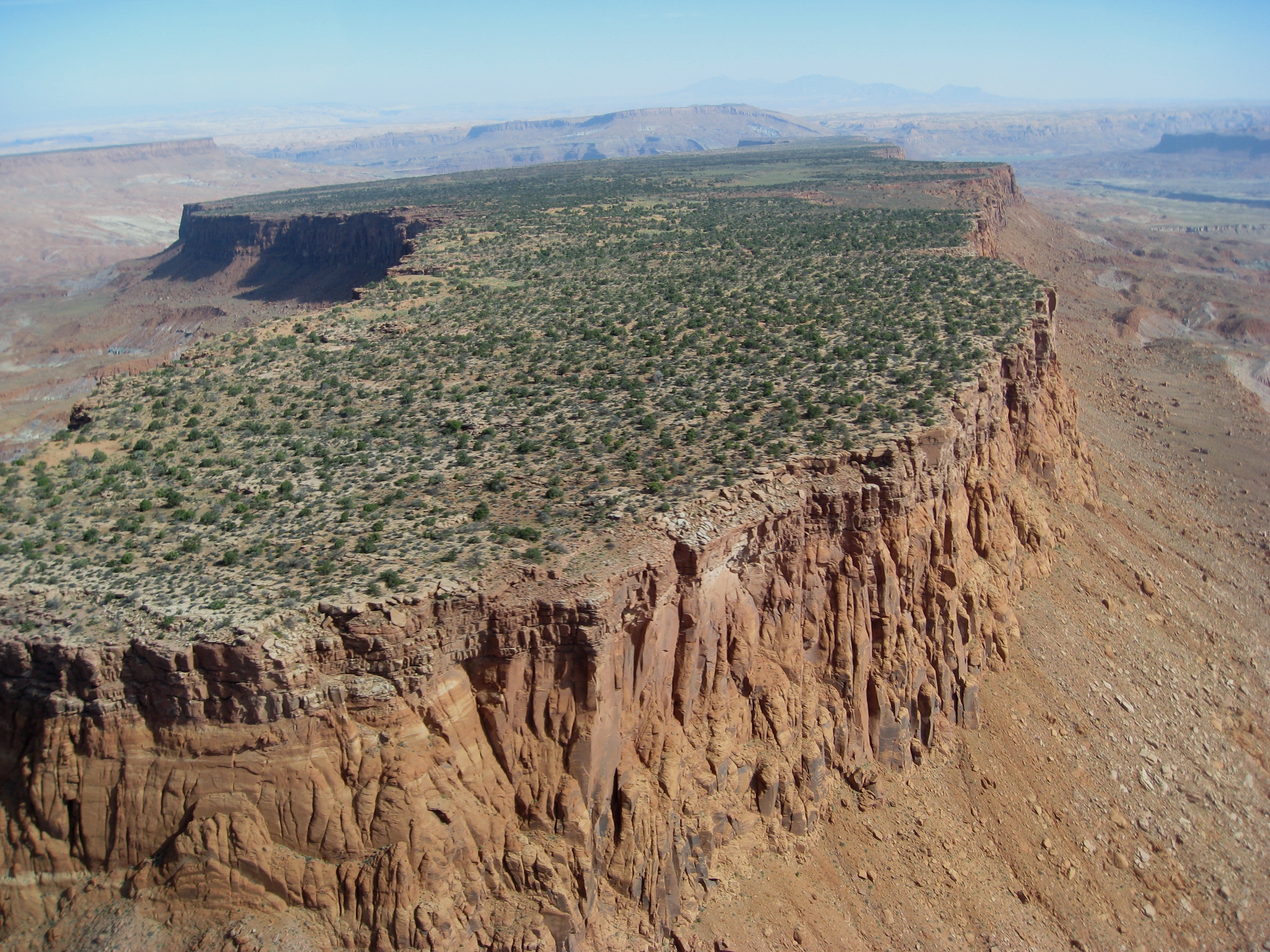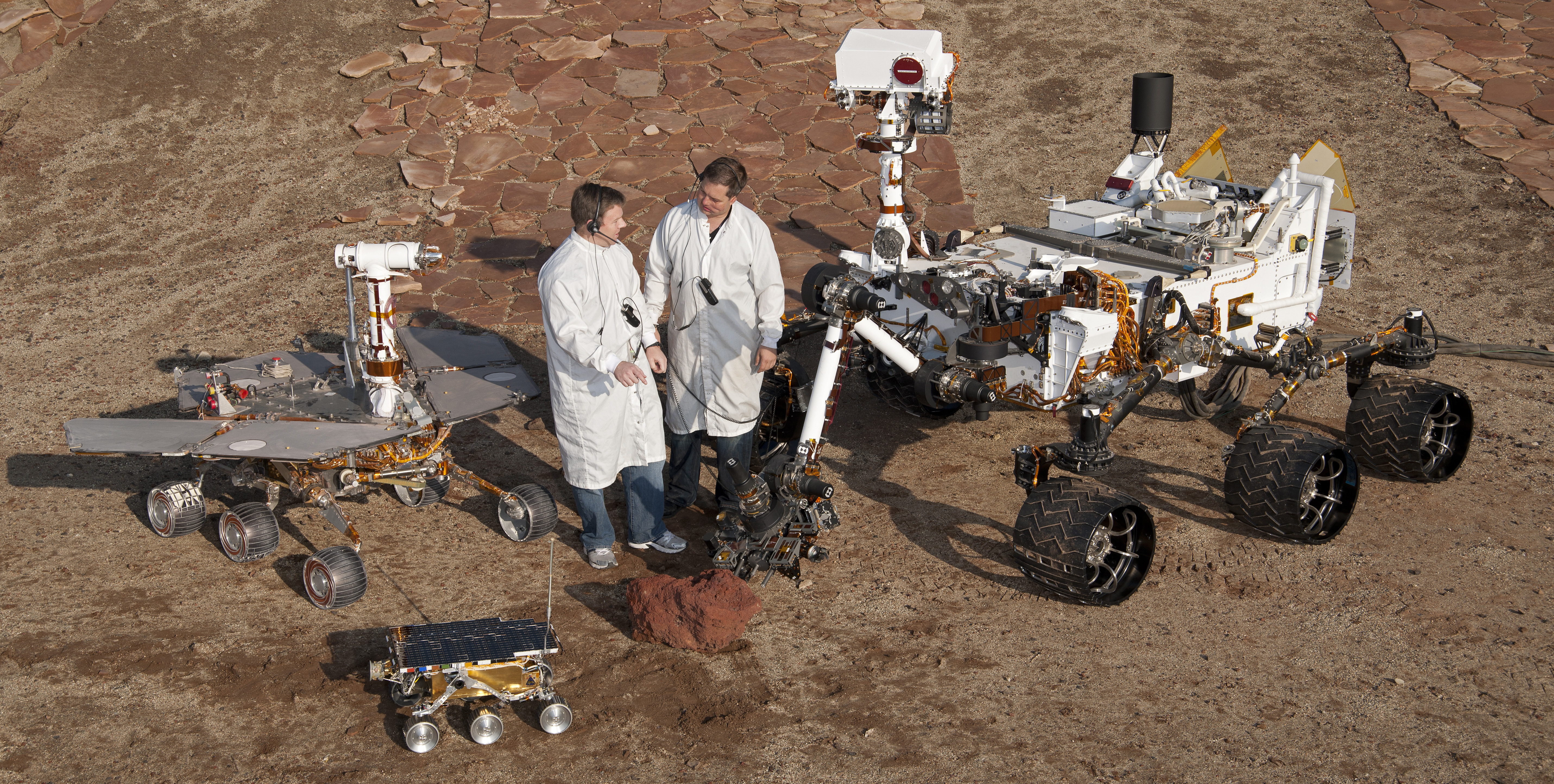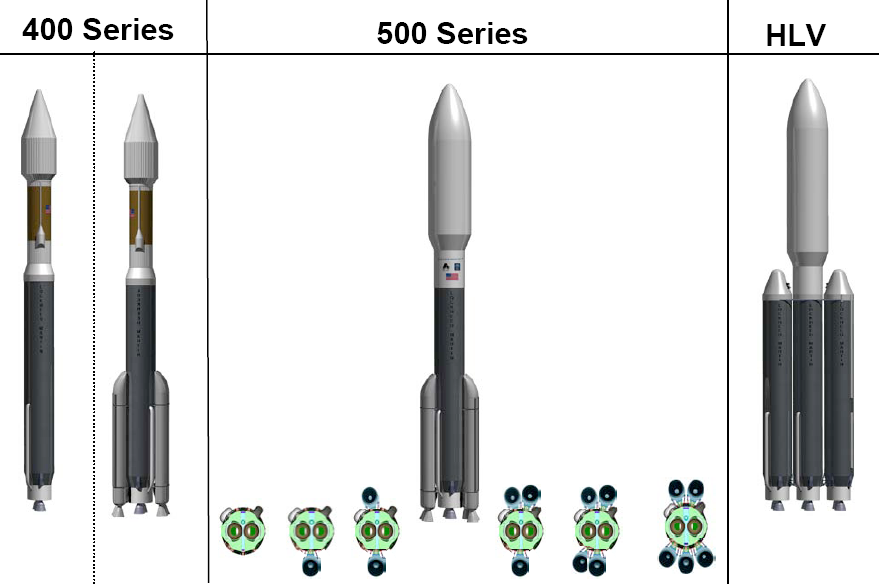|
Northeast Syrtis
Northeast Syrtis is a region of Mars once considered by NASA as a landing site for the Mars 2020 rover mission. This landing site failed in the competition with Jezero crater, another landing site dozens of kilometers away from Northeast Syrtis. It is located in the northern hemisphere of Mars at coordinates 18°N,77°E in the northeastern part of the Syrtis Major volcanic province, within the ring structure of Isidis impact basin as well. This region contains diverse morphological features and minerals, indicating that water once flowed here. It may be an ancient habitable environment; microbes could have developed and thrived here. The layered terrain of Northeast Syrtis is unique on the surface of Mars, containing diverse aqueous minerals such as like clay, carbonate, serpentine and sulfate, as well as igneous minerals such as olivine and high-calcium and low-calcium pyroxene. Clay minerals form in the interaction between water and rock and sulfate minerals usually form thro ... [...More Info...] [...Related Items...] OR: [Wikipedia] [Google] [Baidu] |
NE Syrtis Context
NE, Ne or ne may refer to: Arts and entertainment * Neutral Evil, an alignment in the American role-playing game ''Dungeons & Dragons'' * New Edition, an American vocal group * Nicomachean Ethics, a collection of ten books by Greek philosopher Aristotle Businesses and organizations * National Express, an English public transport operator * Natural England, an English government agency * New England Patriots, a professional American football team in Foxborough, Massachusetts * New Hope (Macau), a Macau political party * SkyEurope Airlines, a Slovakian airline * New Era Cap Company, an American headwear company Language * Ne (cuneiform), a cuneiform sign * Ne (kana), a Japanese written character * Nepali language * Modern English, sometimes abbreviated NE (to avoid confusion with Middle English) Places * NE postcode area, UK, a postcode for the City of Newcastle upon Tyne, Tyne and Wear * Ne, Liguria, Italy, a ''comune'' in the Province of Genoa * Né (river), a river in southwes ... [...More Info...] [...Related Items...] OR: [Wikipedia] [Google] [Baidu] |
Outflow Channels
Outflow channels are extremely long, wide swathes of scoured ground on Mars. They extend many hundreds of kilometers in length and are typically greater than one kilometer in width. They are thought to have been carved by huge outburst floods. Crater counts indicate that most of the channels were cut since the early Hesperian, though the age of the features is variable between different regions of Mars. Some outflow channels in the Amazonis and Elysium Planitiae regions have yielded ages of only tens of million years, extremely young by the standards of Martian topographic features. The largest, Kasei Vallis, is around long, greater than wide and exceeds in depth cut into the surrounding plains. The outflow channels contrast with the Martian channel features known as " valley networks", which much more closely resemble the dendritic planform more typical of terrestrial river drainage basins. Outflow channels tend to be named after the names for Mars in various ancient world ... [...More Info...] [...Related Items...] OR: [Wikipedia] [Google] [Baidu] |
Mesa Of Northeast Syrtis
A mesa is an isolated, flat-topped elevation, ridge or hill, which is bounded from all sides by steep escarpments and stands distinctly above a surrounding plain. Mesas characteristically consist of flat-lying soft sedimentary rocks capped by a more resistant layer or layers of harder rock, e.g. shales overlain by sandstones. The resistant layer acts as a caprock that forms the flat summit of a mesa. The caprock can consist of either sedimentary rocks such as sandstone and limestone; dissected lava flows; or a deeply eroded duricrust. Unlike ''plateau'', whose usage does not imply horizontal layers of bedrock, e.g. Tibetan Plateau, the term ''mesa'' applies exclusively to the landforms built of flat-lying strata. Instead, flat-topped plateaus are specifically known as '' tablelands''.Duszyński, F., Migoń, P. and Strzelecki, M.C., 2019. ''Escarpment retreat in sedimentary tablelands and cuesta landscapes–Landforms, mechanisms and patterns.'' ''Earth-Science Reviews, no. 102890 ... [...More Info...] [...Related Items...] OR: [Wikipedia] [Google] [Baidu] |
NE Syrtis Ellipse
NE, Ne or ne may refer to: Arts and entertainment * Neutral Evil, an alignment in the American role-playing game ''Dungeons & Dragons'' * New Edition, an American vocal group * Nicomachean Ethics, a collection of ten books by Greek philosopher Aristotle Businesses and organizations * National Express, an English public transport operator * Natural England, an English government agency * New England Patriots, a professional American football team in Foxborough, Massachusetts * New Hope (Macau), a Macau political party * SkyEurope Airlines, a Slovakian airline * New Era Cap Company, an American headwear company Language * Ne (cuneiform), a cuneiform sign * Ne (kana), a Japanese written character * Nepali language * Modern English, sometimes abbreviated NE (to avoid confusion with Middle English) Places * NE postcode area, UK, a postcode for the City of Newcastle upon Tyne, Tyne and Wear * Ne, Liguria, Italy, a ''comune'' in the Province of Genoa * Né (river), a river in southwes ... [...More Info...] [...Related Items...] OR: [Wikipedia] [Google] [Baidu] |
Regolith
Regolith () is a blanket of unconsolidated, loose, heterogeneous superficial deposits covering solid rock. It includes dust, broken rocks, and other related materials and is present on Earth, the Moon, Mars, some asteroids, and other terrestrial planets and moons. Etymology The term ''regolith'' combines two Greek words: (), 'blanket', and (), 'rock'. The American geologist George P. Merrill first defined the term in 1897, writing: Earth Earth's regolith includes the following subdivisions and components: * soil or pedolith * alluvium and other transported cover, including that transported by aeolian, glacial, marine, and gravity flow processes. * "saprolith'", generally divided into the ** ''upper saprolite'': completely oxidised bedrock ** ''lower saprolite'': chemically reduced partially weathered rocks ** ''saprock'': fractured bedrock with weathering restricted to fracture margins * volcanic ash and lava flows that are interbedded with unconsolidated material * ... [...More Info...] [...Related Items...] OR: [Wikipedia] [Google] [Baidu] |
Curiosity (rover)
''Curiosity'' is a car-sized Mars rover designed to explore the Gale crater on Mars as part of NASA's Mars Science Laboratory (MSL) mission. ''Curiosity'' was launched from Cape Canaveral (CCAFS) on November 26, 2011, at 15:02:00 UTC and landed on Aeolis Palus inside Gale crater on Mars on August 6, 2012, 05:17:57 UTC. The Bradbury Landing site was less than from the center of the rover's touchdown target after a journey. Mission goals include an investigation of the Martian climate and geology, assessment of whether the selected field site inside Gale has ever offered environmental conditions favorable for microbial life (including investigation of the role of water), and planetary habitability studies in preparation for human exploration. In December 2012, ''Curiosity'' two-year mission was extended indefinitely, and on August 5, 2017, NASA celebrated the fifth anniversary of the ''Curiosity'' rover landing. On August 6, 2022, a detailed overview of accomplishme ... [...More Info...] [...Related Items...] OR: [Wikipedia] [Google] [Baidu] |
Atlas V
Atlas V is an expendable launch system and the fifth major version in the Atlas (rocket family), Atlas launch vehicle family. It was originally designed by Lockheed Martin, now being operated by United Launch Alliance (ULA), a joint venture between Lockheed Martin and Boeing. Atlas V is also a major NASA launch vehicle. It is America's longest-serving active rocket. In August 2021, ULA announced that Atlas V would be retired, and all 29 remaining launches had been sold. , 19 launches remain. Each Atlas V launch vehicle consists of two main stages. The first stage (rocketry), first stage is powered by a Russian RD-180 engine manufactured by NPO Energomash, Energomash and burning kerosene and liquid oxygen. The Centaur (rocket stage), Centaur upper stage is powered by one or two American RL10 engine(s) manufactured by Aerojet Rocketdyne and burns liquid hydrogen and liquid oxygen. The Star 48 upper stage was used on the ''New Horizons'' mission as a third stage. strap-on booster, ... [...More Info...] [...Related Items...] OR: [Wikipedia] [Google] [Baidu] |
Smectite
A smectite (from ancient Greek ''σμηκτός'' smektos 'lubricated'; ''σμηκτρίς'' smektris 'walker's earth', 'fuller's earth'; rubbing earth; earth that has the property of cleaning) is a mineral mixtures of various swelling sheet silicates (phyllosilicates), which have a three-layer 2:1 (TOT) structure and belong to the clay minerals. Smectites mainly consist of montmorillonite, but can often contain secondary minerals such as quartz and calcite. Terminology In clay mineralogy, smectite is synonym of montmorillonite (also the name of a pure clay mineral phase) to indicate a class of swelling clays. The term smectite is commonly used in Europe and in the UK while the term montmorillonite is preferred in North America, but both terms are equivalent and can be used interchangeably. For industrial and commercial applications, the term bentonite is mostly used in place of smectite or montmorillonite. Mineralogical structure The 2:1 layer (TOT) structure consists of tw ... [...More Info...] [...Related Items...] OR: [Wikipedia] [Google] [Baidu] |
Jarosite
Jarosite is a basic hydrous sulfate of potassium and ferric iron (Fe-III) with a chemical formula of KFe3(SO4)2(OH)6. This sulfate mineral is formed in ore deposits by the oxidation of iron sulfides. Jarosite is often produced as a byproduct during the purification and refining of zinc and is also commonly associated with acid mine drainage and acid sulfate soil environments. Physical properties Jarosite has a trigonal crystal structure and is brittle, with basal cleavage, a hardness of 2.5-3.5, and a specific gravity of 3.15-3.26. It is translucent to opaque with a vitreous to dull luster, and is colored dark yellow to yellowish-brown. It can sometimes be confused with limonite or goethite with which it commonly occurs in the gossan (oxidized cap over an ore body). Jarosite is an iron analogue of the potassium aluminium sulfate, alunite. Solid solution series The alunite supergroup includes the alunite, jarosite, beudantite, crandallite and florencite subgroups. The aluni ... [...More Info...] [...Related Items...] OR: [Wikipedia] [Google] [Baidu] |
Shield Volcano
A shield volcano is a type of volcano named for its low profile, resembling a warrior's shield lying on the ground. It is formed by the eruption of highly fluid (low viscosity) lava, which travels farther and forms thinner flows than the more viscous lava erupted from a stratovolcano. Repeated eruptions result in the steady accumulation of broad sheets of lava, building up the shield volcano's distinctive form. Shield volcanoes are found wherever fluid low-silica lava reaches the surface of a rocky planet. However, they are most characteristic of ocean island volcanism associated with hot spots or with continental rift volcanism. They include the largest volcanoes on earth, such as Tamu Massif and Mauna Loa. Giant shield volcanoes are found on other planets of the Solar System, including Olympus Mons on Mars and Sapas Mons on Venus. Etymology The term 'shield volcano' is taken from the German term ''Schildvulkan'', coined by the Austrian geologist Eduard Suess in 1888 an ... [...More Info...] [...Related Items...] OR: [Wikipedia] [Google] [Baidu] |
Stratigraphy
Stratigraphy is a branch of geology concerned with the study of rock (geology), rock layers (Stratum, strata) and layering (stratification). It is primarily used in the study of sedimentary rock, sedimentary and layered volcanic rocks. Stratigraphy has three related subfields: lithostratigraphy (lithologic stratigraphy), biostratigraphy (biologic stratigraphy), and chronostratigraphy (stratigraphy by age). Historical development Catholic priest Nicholas Steno established the theoretical basis for stratigraphy when he introduced the law of superposition, the principle of original horizontality and the principle of lateral continuity in a 1669 work on the fossilization of organic remains in layers of sediment. The first practical large-scale application of stratigraphy was by William Smith (geologist), William Smith in the 1790s and early 19th century. Known as the "Father of English geology", Smith recognized the significance of Stratum, strata or rock layering and the importance ... [...More Info...] [...Related Items...] OR: [Wikipedia] [Google] [Baidu] |







